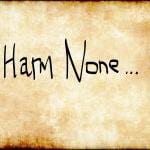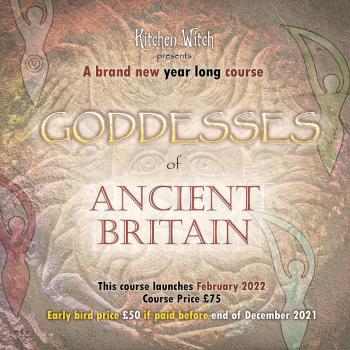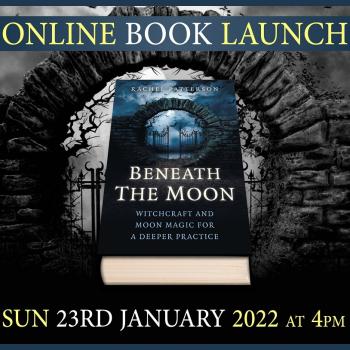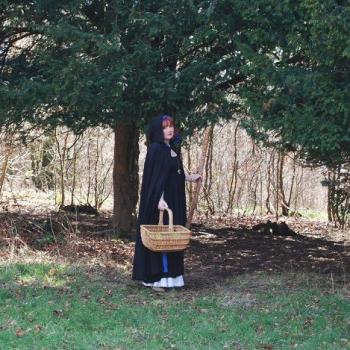Magical Tools and Altars
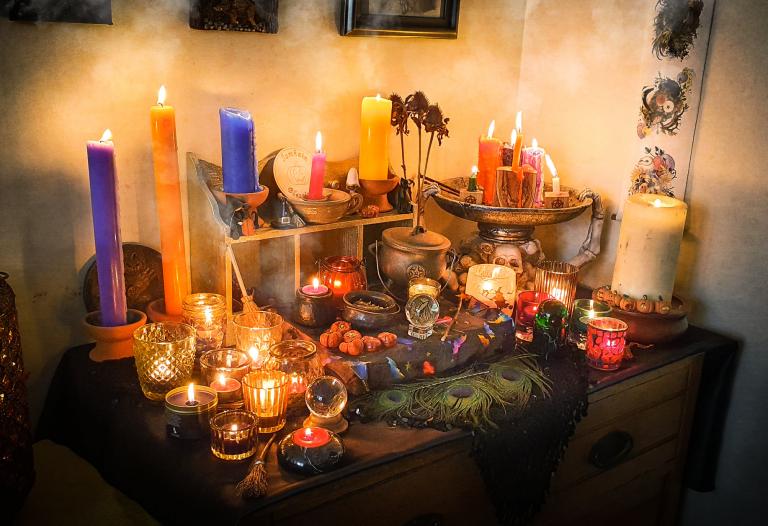
What is an altar?
I looked up the word in the dictionary just out of interest and this is the description it gives:
“An elevated place or structure, as a mound or platform, at which religious rites are performed or on which sacrifices are offered to gods, ancestors etc”
When I had finished laughing, I thought about it – this is the description of what ancient altars were, it seems that it needs a bit of tweaking to represent modern day altars. Otherwise there are going to be some very worried sacrificial goats out there!
An altar to me is a small place, an area that is set aside where you can place items in honour of deity, leave offerings, sit and meditate, a place to connect with deity and a place to leave spells to ‘do their thing’. It isn’t just a pretty place to keep your magical goodies, although that is part of it, for me an altar is also a place to honour deity. Over time and with use your altar will become a sacred place and it will gather magical energy from the workings, meditations and items that you have used it for or placed on it.
You don’t have to have a huge ornate table with dragons carved up the legs and gold inlay on the top, an altar can just be a small space on your mantelpiece or book shelf, it can be the top of a coffee table. If you are still ‘in the broom closet’ or sharing your space with others you could keep your altar on a tray and just slide it into a cupboard. If you don’t have anywhere inside the house to use you could always just set aside a small space in the garden, just a clear patch of earth that you can leave stones, flowers and shells on.
I have seen all sorts of altars ranging from a pile of stones to huge grand affairs dripping in gold and splendour. Ultimately your altar is a reflection of you and should be so, be creative, and go with what you feel is right and what suits you.
Intent and placing
Altars can be used for many intents; you may just want to have a main one or a working one. You might also like to set up an altar specifically for healing or one with the intent of prosperity, the options are really limitless.
There are traditional items and positions involved in creating an altar and I will share my interpretation of them here, but I can’t stress enough how important I feel it is to go with what feels right for you as an individual. If you want an altar with fluffy toys, sparkly tiaras and offerings of chocolate sweets on it – go for it!
How you set up your altar is really up to you and what feels right, but traditionally the Goddess items are placed on the left and the God items on the right. The altar is a reflection of a ritual circle, so if you use representations of the elements then they should technically be placed to correspond with the right directions too.
If you belong to a particular tradition or coven they may have strict rules about these things. If you are unsure ask, they may have underlying concepts of why they do things a particular way. However I don’t believe the traditional rules are hard and fast, nothing is WRONG, if you think an item feels right in a particular place then go with it. I am a firm believer of the “if it feels right for you, do it” school of thought.
Magical Tools
There are a recognised set of tools that are used in witchcraft, but as a Kitchen Witch myself I tend to be fairly flexible on these. As a newcomer to the craft I thought I had to rush out and purchase all these things that I needed all the right tools to get the job done…and you don’t. Something that comes with experience, something that you learn over time is that really you don’t need a fancy sparkly athame; although it might look pretty a kitchen knife does the same job. I’m not saying don’t buy all these things but I am saying you don’t NEED to buy them, especially if you are working to a budget, be inventive, create your own tools, make them from natural items or look through charity/thift stores and buy things second hand.
Cauldron – every witch has to have one of these surely, you wouldn’t be a witch without one? And yes you do really need something cauldronish but it doesn’t have to be a fancy iron one, it can just be an old casserole dish. The cauldron is a symbol of feminine; it represents a womb and also corresponds to the element of Water. I use my cauldron for burning things – incense, herbs, spells etc so really all you need is a pot shaped vessel that is fire proof.
Wand – you’ve got to have a wand… One of those silver sparkly ones with glitter? Well yes, if that’s what takes your fancy have one. You can make a wand out of a piece of wood, sand it or leave it natural, carve runes or symbols onto it, tie ribbons and feathers to it – make it your own. The added bonus of having a wooden wand is that you can use the energies from the tree that the wood came from. You could have wands made from different types of trees to use in different rituals or for different spells. Alternatively you could use a wooden spoon from your kitchen or just your finger!
Athame (pronounced ah-tha-may) – this is essentially a dagger, it is ceremonial, usually not sharp and represents the masculine. It is often used in Ceremonial rituals placed into a Chalice to represent the male and female union (come on think about it…). It is also used for directing energy and casting circles. You can get some absolutely beautiful athames; I have one myself that was gifted to me that has the triple goddesses around the handle. I also have a very plain, simple athame with a natural wooden handle and a brass blade. You can purchase a pretty athame, you could also make one out of wood if you are handy or you can also just adapt a kitchen knife. I have had my small athame for many years and only ever used it once to cast a circle…the rest of the time it sits on my altar collecting dust.
Besom/broomstick – you’ve got to have one of these for when you need to nip down the shops in a hurry 😉 The besom is used before a ritual to sweep away negative energies, it is only symbolic as the broom bristles never actually touch the floor (otherwise the besom would just get full up with dust and rubbish). You can also use a besom to symbolically sweep through your house if it needs a good shake up shoot any negativity out of the door. I also have a small besom hanging in my porch, bristles up – this helps keep unwanted guests away. The besom is also used in handfastings, the couple jump over it to signify their pledge. There are some beautiful handmade besoms available, keep an eye out at local country fairs. Also keep an eye out in the shops during Halloween, quite often they have some really pretty, natural besoms to go with costumes that can be utilised.
Chalice – a cup or goblet. This holds water or wine and represents the feminine. I have a very pretty silver one that I purchased in my mad rush to collect all the ‘essentials’ when I first started, I think I used it once and now it sits in the cupboard. But, we do use a very pretty glass one at our rituals that is passed around for everyone to take a sip of the wine or mead (unfortunately usually only fruit juice) contained therein. I do also own a lovely gothic chalice with a dragon curled around, but that I use on my dragon altar and have never used it to actually drink from, it’s just pretty! You can buy a dramatic or pretty chalice, you could also use a pretty wine glass, tumbler or any kind of drinking vessel, have a look in the supermarkets or charity stores.
Bell – again this is something that I just had to have at the beginning and really I haven’t used it much at all, that’s not saying that you won’t though. A bell is good to use when you need a quick fix to dispel negative energy in the house, ring the bell in each room to clear the air. It can also be used to call quarters in ritual. A bell can also be useful to help induce trance and meditation.
Altar cloth – I love to change the cloth on my altars (yep I have more than one altar) to suit the seasons, but you don’t have to. Some of my altar clothes were purchased from occult stores with the sole purpose of decorating my altar, some are old scarves that I had, and some are just a yard or two of satin and chiffon that I purchased on eBay. Get creative, go with your flow and see where it takes you. I have some wicked red and black spider web fabric I use at Samhain (purchased on eBay) and I have some lovely bright coloured satin that I overlay with different colour chiffon to create a lovely effect, red satin with gold chiffon overlay is perfect for the Autumn Equinox for instance. But you can get some beautiful large scarves cheaply in discount stores and charity shops; you might even find a few in the back of granny’s closet if you ask nicely!
Asperger – now it took me some time before I realised what this was, you don’t seem to hear the word very often but it is actually the official name for the small brush that is used in ritual to sprinkle blessed water. Sometimes it is made from twigs sometimes from feathers or even dried lavender stems tied together – easy to make if you want to use one. In our rituals we tend to dip our fingers in the water and flick…it is way more fun 😉
Boline – now this is the fancy name for the knife used to cut herbs, it usually has a white handle and will usually have a curved blade. It can also be utilised for carving symbols in candles for spell work. I have to admit I don’t own one, when I need to cut herbs I use secateurs, when I need to carve candles I use a large pin, but if you fancy owning one go for it.
Censor – this is a little pot on a chain for burning incense in (visualise a Roman Catholic priest swinging a brass pot around church wafting smoke). Useful in ritual if you have to walk around the circle with it, but you would also use a small cauldron, brazier or fire proof pot.
Cords – used in various areas of the craft; for knot magic, to mark boundaries and in initiations.
Candles – oh how I love candles! Used as representations of the God and Goddess on your altar, as symbols of the elements, as the element of fire, used in spell work, meditation and divination.
Cake or chocolate – yep you read it right. During most rituals some sort of bread or cake will be shared. In my Coven it is always cake, why? Because it’s nice. It is also good to eat something after a ritual or any energy work as it helps to ground you, chocolate works well too (that’s my excuse and I am sticking to it).
Crystals – surely every self respecting witch owns a crystal or two? They are one of those things that once you have one you will usually start a whole collection and it doesn’t stop. Crystals are useful for so many things; they all have their own unique energies and qualities. They can be used in spell work, ritual, meditation, healing and offerings. A crystal can range from a simple beach pebble right up to a diamond and all the other semi precious stones in between.
Crystal ball – “just cross my palm with silver”, not everyone will want or use a crystal ball, some of the larger ones are incredibly expensive, but I have a couple of small ones that fit in the palm of my hand, they are beautiful and work very well for divination.
Drum – useful but not essential. Used in ritual to raise energy I also use mine in meditation and trance work. It doesn’t have to be fancy, although there are some beautiful bohdran’s out there. If you don’t want to spend out lots of money make one, all you need is an old biscuit or sweet tin. I actually learnt to the play the drums using a plastic tub with a lid on.
Incense – this can be a loose mixture burnt on charcoal, cones or sticks. Incense is used to clear negative energy, create sacred space, complement spell work or add energy to a ritual. If you can’t use incense for health reasons try using essential oil on a burner or scented candles.
Offering dish/libation bowl – I have several offering dishes on my altars, one is Goddess shaped and purchased in Glastonbury, two I made myself from air dry clay, one is a large shell I found on the beach and one is a glass dish I purchased for a few pence in a charity shop. I also have one in the garden which is just a large flat stone I collected from Tintagel. These little bowls are used to leave offerings to the Gods, spirits or the Fae. Pretty much anything can be left as an offering, go with what feels right for you and what you think the particular deity or Fae might like. I usually put a couple of crystals in my Goddess offering dish. I leave honey and milk outside for the Fae and a lot of the Orisha spirits like rum and tobacco.
Mortar and Pestle – I have a very pretty stone mortar and pestle that I keep in my work room purely for magical use. Not for magical reasons but because I sometimes use it to grind up items that might be poisonous to ingest such as mistletoe berries – it would be a bit disastrous to then use it to make a nice spice mix to go on chicken for dinner…along with the left over mistletoe berries – ick! If you don’t have a mortar and pestle use the end of a rolling pin in a small pot.
Sword – I have used a sword in ritual to cast a circle, but they are usually mighty heavy and a bit unwieldy but if you like the King Arthur thing go with it!
Staff – I have a very beautiful staff that was gifted to me; they aren’t essential but can be used to cast circles and direct energy, also representative of the God. They seem to be used a lot more by druids than witches. There are many beautiful staffs, some of them very ornate but you can make your own, just take a walk in your local woods and find a fallen branch that is the right height and shape. Clean it up and voila! – A staff is born. If you feel the urge you could carve symbols on it, tie ribbons or feathers around it or even stick crystals on the top.
Video
To watch me talk about Altars & Magical Tools click the link below
Book
Information taken from Grimoire of a Kitchen Witch by Rachel Patterson
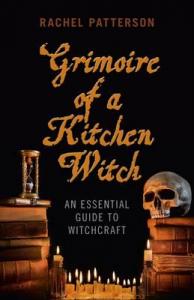
This book is essentially a Book of Shadows, a Kitchen Witch’s Grimoire. It covers what it means to be a witch, how a Witch works, what a Witch does and how a Witch celebrates the turning of the seasons. It is packed full of information about all sorts of subjects from a breakdown of rituals and magical tools to reading auras and rites of passage, along with meditations, recipes for oils, incenses and spells and a huge amount of crafts to make for each Sabbat. The information herein does not follow any strict tradition; it is an individual interpretation of witchcraft melding together Wiccan training with Kitchen witchery, ways of the Old Craft and a bit of hoodoo thrown in for good measure. Magic and the Craft are fluid and flexible, it is ever changing and we are ever learning.
Available in paperback, ebook and AUDIO format.

